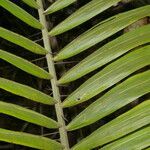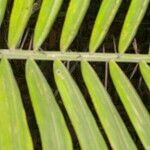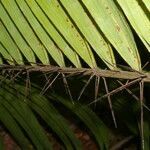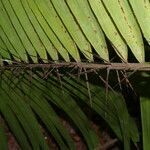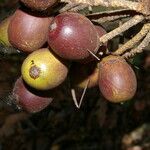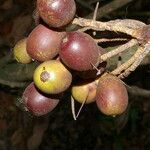A palm. It has a cluster of stems. They often form large dense clumps. They are spiny. They grow 1-10 m tall and the stems are 2-6 cm across. There are 3-10 leaves on each stem and they have leaflets along the stalks and are spiny. There are short and long black spines. The long spines can be 11 cm long. There are 24-48 leaflets on each side and they are arranged regularly and spread in the same plane. The flowering stalks have 5-17 thick branches. The fruit are oval and 2.4-4.5 cm long by 1.3-3.5 cm wide. The are purplish-black.
